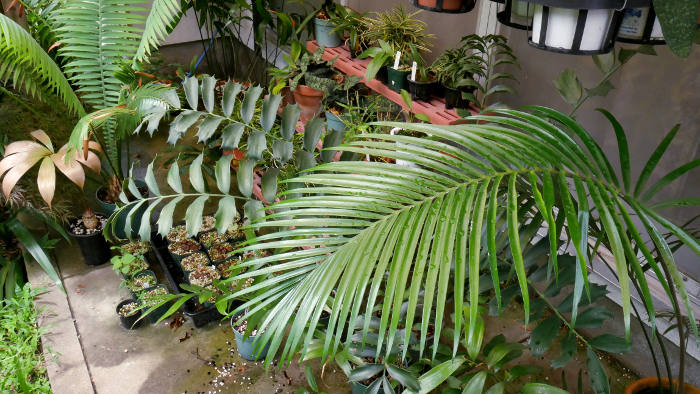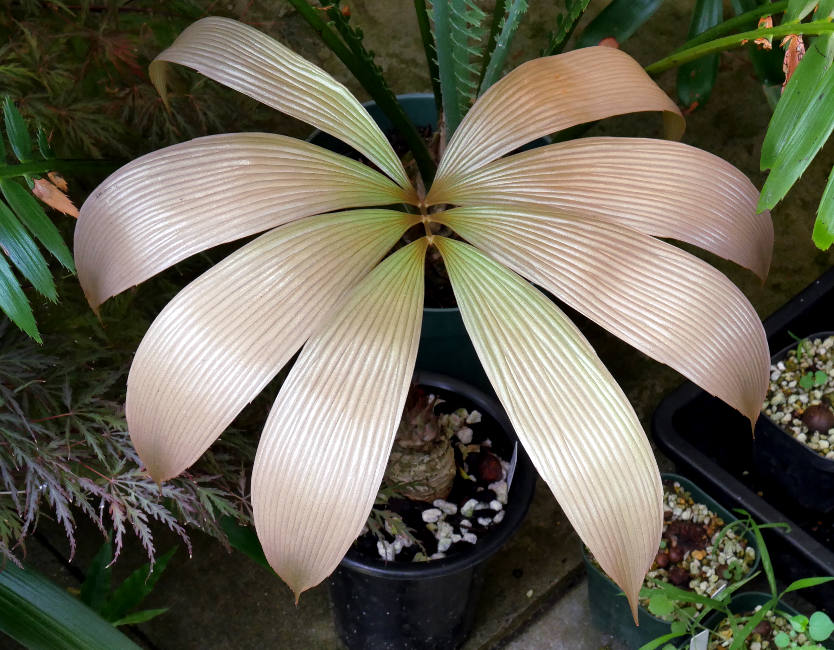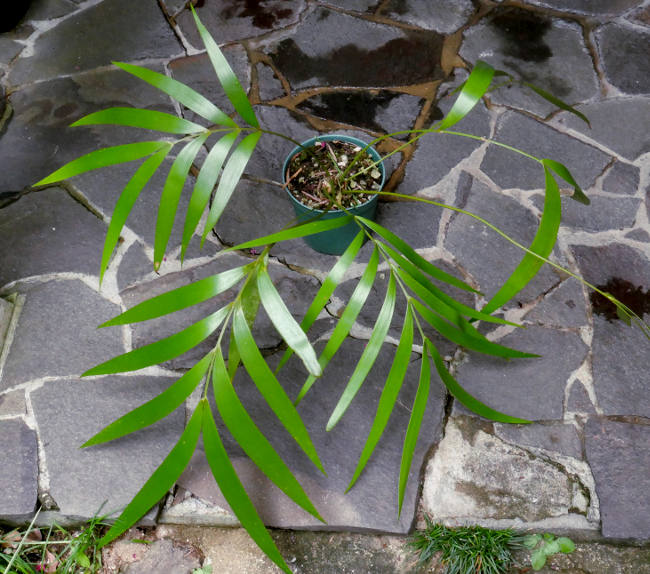KyushuCalanthe
Just call me Tom
- Joined
- Jan 12, 2008
- Messages
- 8,182
- Reaction score
- 465
Summer is full on here in southern Japan and the cycad collection is responding with new flushes. Here's what's going on out there with some of them.

Lepidozamia peroffskyana (right foreground), Encephalartos ferox (center), Dioon spinulosum (left back), and Zamia dressleri (pink flushed plant) - all of these plants have flushed new leaves this season except E. ferox. When growing cycads you get used to plants skipping a season for new frond growth.

Zamia dressleri - his species has been really hard to keep here in southern Japan, mostly because of the colder winter conditions, even in the relative warmth of a grow room which occasionally goes down to 5 C - not to its liking. It is said this species also needs a particular myccorrhizal fungus to remain healthy longterm. I can only guess this plant was inoculated with the fungus when I got it five years ago.

Zamia pseudoparasitica - probably my best growing Zamia species, tolerating fairly cold temperatures without a problem. In the wild they can be found at high elevation (up to 1000m), so that may be why they can handle cold better than most Zamia. This specimen is finally becoming a near adult.

Encephalartos trispinosus - I got this plant a couple seasons ago, hoping it would be another "cold hardy" cycad for southern Japan. No way, this plant likes heat, like all cycads, and cannot take the combination of cold temperatures and wet conditions without risking fatal rot. I love its blue foliage, but one day had the disquieting realization that it looks terribly similar to an artichoke plant!
If you want to see more then check out the full article here:
Cycads in my home garden

Lepidozamia peroffskyana (right foreground), Encephalartos ferox (center), Dioon spinulosum (left back), and Zamia dressleri (pink flushed plant) - all of these plants have flushed new leaves this season except E. ferox. When growing cycads you get used to plants skipping a season for new frond growth.

Zamia dressleri - his species has been really hard to keep here in southern Japan, mostly because of the colder winter conditions, even in the relative warmth of a grow room which occasionally goes down to 5 C - not to its liking. It is said this species also needs a particular myccorrhizal fungus to remain healthy longterm. I can only guess this plant was inoculated with the fungus when I got it five years ago.

Zamia pseudoparasitica - probably my best growing Zamia species, tolerating fairly cold temperatures without a problem. In the wild they can be found at high elevation (up to 1000m), so that may be why they can handle cold better than most Zamia. This specimen is finally becoming a near adult.

Encephalartos trispinosus - I got this plant a couple seasons ago, hoping it would be another "cold hardy" cycad for southern Japan. No way, this plant likes heat, like all cycads, and cannot take the combination of cold temperatures and wet conditions without risking fatal rot. I love its blue foliage, but one day had the disquieting realization that it looks terribly similar to an artichoke plant!
If you want to see more then check out the full article here:
Cycads in my home garden



